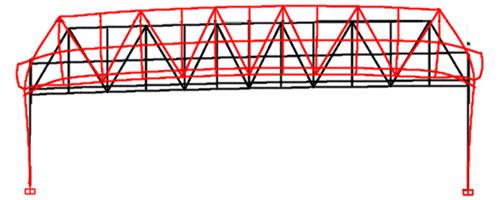Structural Modeling, Instrumentation, and Load Testing of the Tobin Memorial Bridge
Our research describes analytical structural models created for various components of the Tobin Memorial Bridge, and a program of instrumentation and non-destructive testing for the Little Mystic Span. A detailed global finite element model of the Little Mystic Span, one of the two truss spans, was developed along with supporting special studies of continuity and boundary conditions. Special studies include modeling the rotational stiffness of the truss connections and consideration of the piers and bridge shoes. An instrumentation plan was developed and deployed for the Little Mystic Span to capture structural responses of key truss members. Non-destructive testing using loaded trucks were carried out for the purpose of model verification and calibration. Comparisons between experimental and analytical strains for key truss members show reasonable agreement. Special study results were used to fine-tune the global finite element model. The verified models may be used as a condition assessment program and structural health monitoring system for the management of the Tobin Memorial Bridge.
(Above) 3D AutoCAD model of the Big Mystic Span
The verified model of the Little Mystic Span allows for the expansion of our research goals. Our current research focuses on the response of this span to changes in temperature. Thermistors record both the daily variation in temperature as well as the seasonal changes in temperature. Using data from the strain gauges, our research group will assess how the changes in strain relate to the changes in temperature. Preliminary studies suggest that increases in temperature cause the midpoint of the Little Mystic Span to deflect upwards, putting the lower chord into compression. The following image shows the deflected shape of the bridge due to a uniform temperature increase.
(Above) Deflected Shape of the Bridge due to Temperature Change
In 2007, the Interstate 35W bridge between Minneapolis and St. Paul collapsed. Initial investigations and studies cited excessive stresses in certain gusset plates as a possible cause for their early failure in the collapse sequence. In light of this collapse, a future goal of our research team is to investigate the strains in the gusset plates on the Little Mystic Span.

